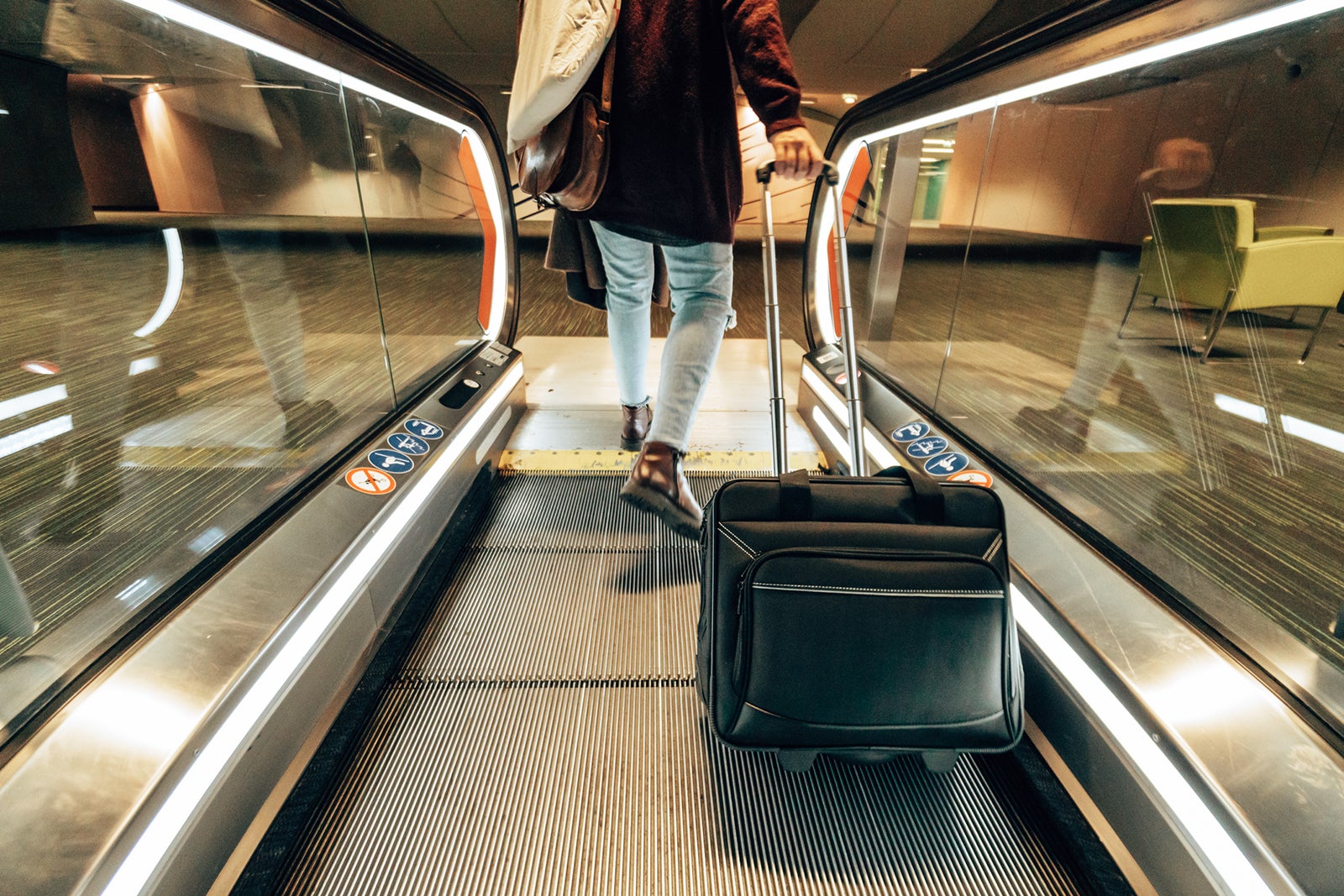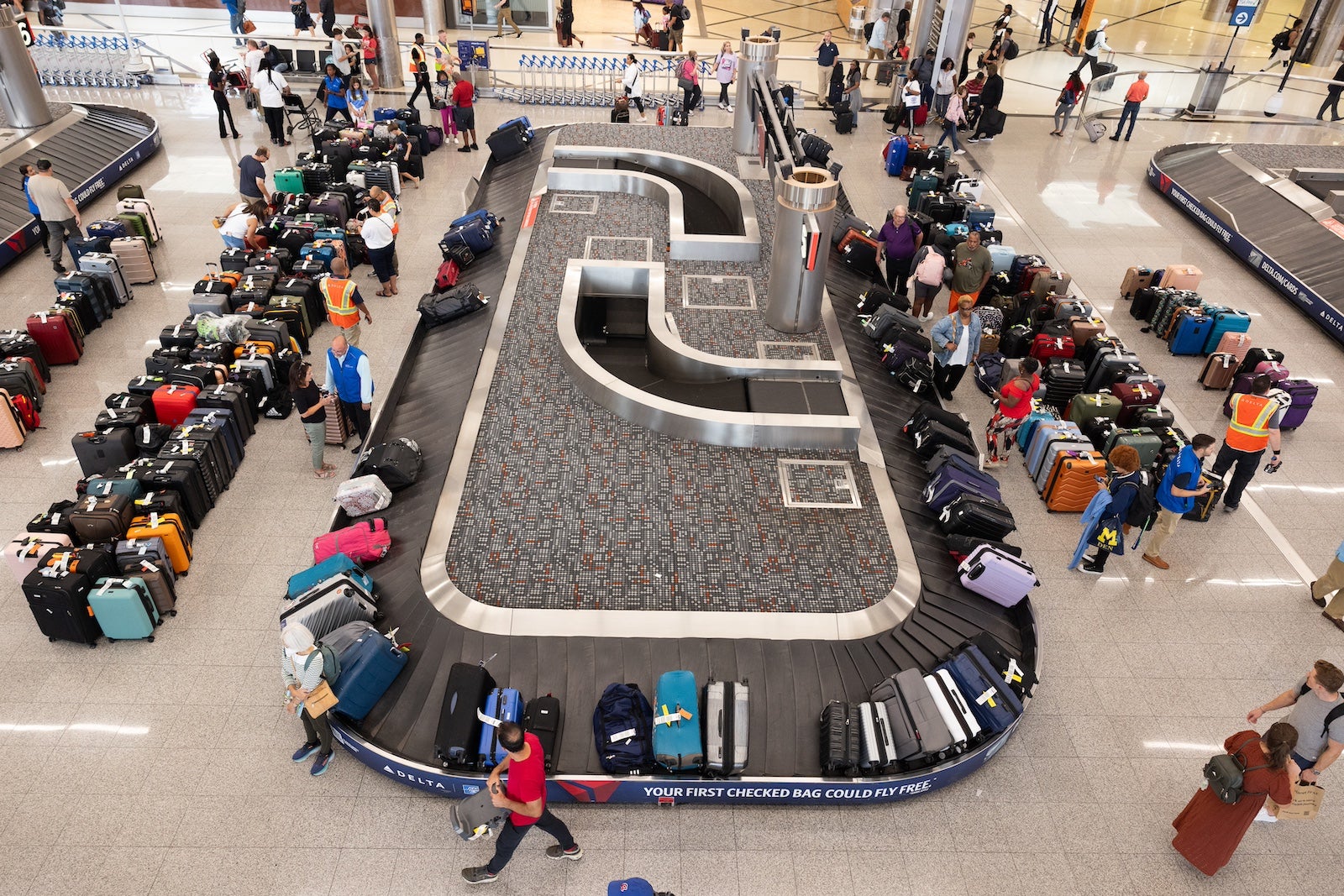Have you ever had your bag lost or damaged during travel? It’s probably inevitable for frequent travelers since most airlines have no idea where your bags are between scans. Some airlines, like United, offer live baggage tracking through an app, but others don’t.
So it’s essential to have baggage insurance if and when your luggage doesn’t show up on the carousel. In this post, I’ll dive into the details of the baggage insurance plan offered by many Amex cards.
The basics of Amex baggage insurance
It’s essential to know all the various rules and restrictions surrounding Amex baggage insurance. Not all losses are covered, so it’s important to be aware of these limits. If they don’t align with your travel needs, you may want to look into buying additional coverage elsewhere. Here’s everything you need to know about the basics of Amex’s baggage insurance plan (terms apply):
The types of losses it covers
Amex may cover losses resulting from damaged, stolen or lost baggage. Carry-on and checked luggage are both eligible for coverage.
Related: The best travel insurance policies and providers
When you’re covered
To be eligible for coverage, you have to travel on a common carrier, which Amex defines as any air, land or water vehicle (other than a personal or rental vehicle) that is licensed to carry passengers for hire and available to the public. Your rental car, as well as taxis and ride-hailing services such as Uber and Lyft, would be excluded.
To receive coverage, you also need to pay for the entire fare with an eligible American Express card or use Membership Rewards points to book tickets through Amex Travel. Trips booked with points or miles from other sources are excluded, though.
Who is covered
This policy covers both primary and additional cardmembers. Coverage also includes cardmembers’ spouses or domestic partners, any dependent children under 23 years old and eligible dependents over 23 years old. However, travelers must be permanent residents of one of the 50 states, Washington, D.C., Puerto Rico or the U.S. Virgin Islands.
How much it covers
The amount that Amex cards will cover for checked bags and their contents varies by card, although so-called high-risk items are subject to different limits. These items include jewelry, sporting equipment, photographic or electronic equipment, computers and audio-visual equipment.

Daily Newsletter
Reward your inbox with the TPG Daily newsletter
Join over 700,000 readers for breaking news, in-depth guides and exclusive deals from TPG’s experts
Carry-on bags may be subject to a different maximum coverage amount, so make sure to read your card’s guide to benefits carefully.
If you want the most coverage for your luggage, consider one of Amex’s premium cards, such as The Platinum Card® from American Express and The Business Platinum Card® from American Express, which will cover contents up to $2,000 per person for checked bags and up to $3,000 per person for carry-on bags.*
Check Amex’s baggage insurance plan webpage to see the policy documents for airfare purchased with each eligible Amex card.
*Eligibility and benefit level varies by card. Terms, conditions and limitations apply. Visit americanexpress.com/benefitsguide for details. Policies are underwritten by AMEX Assurance Company.
Just keep in mind that coverage is secondary; Amex will only cover losses above any reimbursement you may receive from the common carrier.
Other important exclusions
This coverage excludes many items, including cash, tickets, animals, motorized vehicles and anything shipped as freight. It also excludes losses resulting from acts of war, government confiscation and illegal actions. It’s best to read the policy for your card so you understand what types of losses Amex may exclude.
How to file a claim
If you’ve suffered a loss and you meet the conditions outlined in the policy document for your card, here’s what you need to do to get reimbursed.
First, inform Amex of your loss by filing a “notice of claim” within 30 days of your loss. You can do so by visiting americanexpress.com/onlineclaim, calling 1-800-228-6855 in the U.S. or calling 1-303-273-6497 if abroad.
You’ll need to complete “proof of loss” paperwork within 60 days. This paperwork can include a claim form, a charge receipt and a written report of loss for checked bags. Once your claim is approved, you can typically expect reimbursement within 30 days.
Related: When to buy travel insurance vs. when to rely on credit card protections
How to maximize this benefit
Here are some tips for making sure you get the coverage you need.
Pick the right Amex card
The American Express baggage insurance benefit is a strong one, especially since it covers carry-on bags. But when it comes to booking travel, not all Amex cards are created equal. One of the best options is the Amex Platinum; although it carries a $695 annual fee (see rates and fees), it offers some of the best baggage protection of any card.
The American Express® Gold Card, which carries a $325 annual fee (see rates and fees), is another strong option; with this card, you’ll only receive up to $500 per person for checked bags and up to $1,250 per person for carry-on bags. That said, if the Amex Platinum’s annual fee is difficult to justify, this card is still a great option.
Eligibility and benefit level varies by card. Terms, conditions and limitations apply. Visit americanexpress.com/benefitsguide for details. Policies are underwritten by AMEX Assurance Company.
Related: Amex Platinum vs. Amex Gold: Which one is right for you?
Always file a claim
Amex’s baggage insurance covers some things that you might not expect, including lost carry-on bags, without specifying that the loss must be the result of theft. So if you happen to leave your glasses or a jacket on a plane, you may be covered. It also doesn’t matter what form of transportation you use, so long as it meets Amex’s definition of a common carrier.
Therefore, this benefit conceivably applies to losses incurred on subways, ferries, aerial trams and just about any other paid public transportation form. So, you might as well file a claim if something goes missing while you’re traveling.
Worst case, Amex says no and all you’ve lost is a little time.
File a claim with the transportation provider first
Even if this policy covers your loss, there are two reasons to file a claim with the airline or service provider. First, Amex will require you to submit a copy of the claim against the travel provider as part of its own claims process.
Also, Amex’s coverage is secondary. It will cover you in excess of whatever the transportation provider does. So, while the airline’s and Amex’s coverage might both be individually inadequate, you can receive compensation from both.
Bottom line
Cardmembers often forget about credit card travel protections. But it’s worth checking what benefits the cards you typically use for airfare purchases provide.
After all, many of the best cards for airfare purchases offer various protections, including delayed baggage insurance, trip delay insurance and trip cancellation/interruption insurance. If you find your card doesn’t offer many protections, consider adding one of the best cards with travel insurance to your wallet.
Related: 4 times your credit card’s travel insurance can help with travel woes, and 7 times it won’t
For rates and fees of the Amex Platinum Card, click here.
For rates and fees of the Amex Gold Card, click here.



